Article directory
1.1.7.1 Computer Network Architecture
Since the two computer network systems need to communicate with each other, it needs a very complicated process, and the layered idea is adopted when designing the system structure. Convert complex problems into several smaller ones.
The basic reference model for Open Systems Interconnection (OSI/RM) , which was not adopted due to
(1) lack of practical experience of experts and no commercial drive
(2) complexity of the model and low operational efficiency
(3) formulation Long period
(4) Unreasonable level division
TCP/IP is the de facto international standard.
2.1.7.2 Protocol and layer division
The benefits of hierarchical division:
(1) Each layer is independent
(2) Good flexibility
(3) Structurally separable
(4) Easy to implement and maintain
(5) Can promote standardization work
The collection of each layer of the computer network and its protocols is the network architecture, and the computer network architecture is the precise definition of the functions that the computer network and its components should complete.
Architecture is abstract, while implementation is concrete, the actual running computer hardware and software.
3. 1.7.3 Architecture with five-layer protocol
The seven-layer protocol architecture of OSI/RM is clear in concept and complete in theory, but it is complicated and impractical.
TCP/IP is a four-layer architecture.
When learning, the advantages of the two are often integrated, and the architecture of the five-layer protocol is adopted.
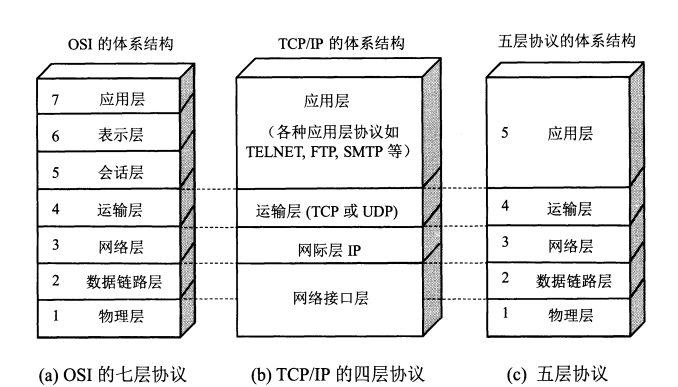
4. 1.7.4 Entities, protocols, services and service access points
Entity: Any hardware or software process that can send or receive messages
Peer entity: An entity in the same hierarchy as the sender and sender
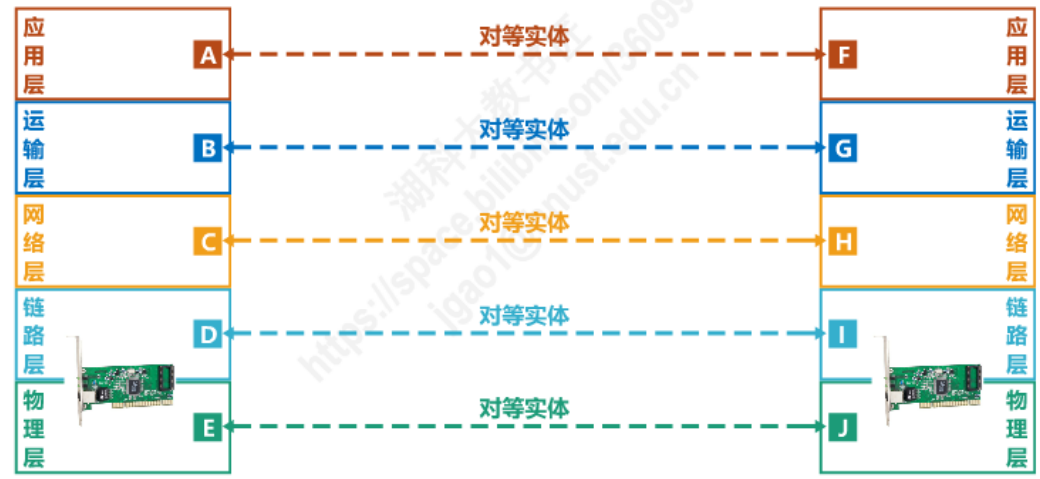
Protocol: A collection of rules governing the logical communication between two peer entities.
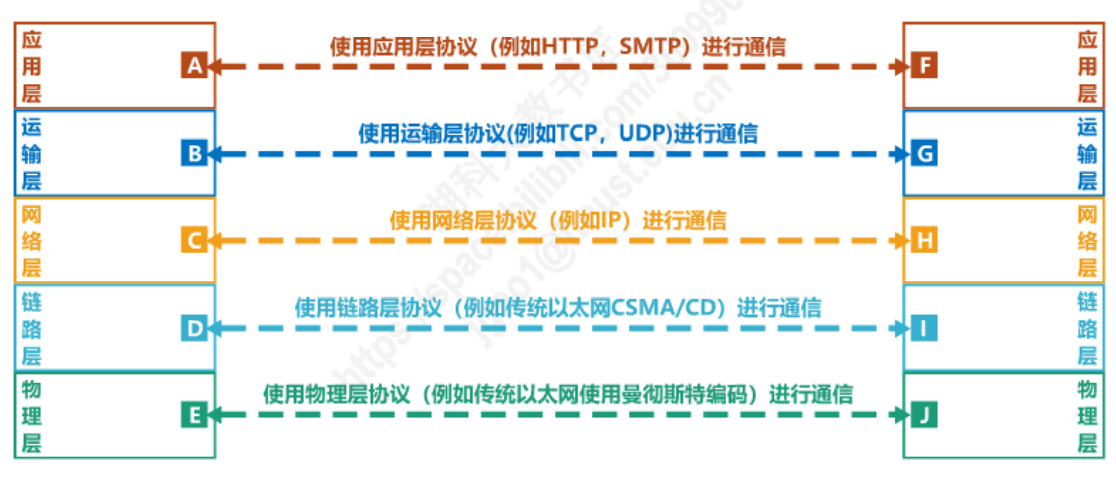
A protocol has three elements: syntax, semantics, synchronization
Service: Under the control of the protocol, the logical communication between two peer entities enables the provision of services to the upper layer.
To use the protocol of this layer, the services of the next layer also need to be used.
Service primitives: The upper layer must exchange some commands with the lower layer to use the services provided by the lower layer.

Protocols are horizontal and services are vertical.
Service access point: In the same system, a logical window for exchanging information between entities on two adjacent layers.
The service access point of the data link layer is the "type field" of the frame.
The service access point of the network layer is the "protocol field" in the header of the IP datagram.
The service access point of the transport layer is the "port number".
Protocol Data Unit PDU: The data unit transmitted between peer layers is called PDU
Service Data Unit SDU: The unit for exchanging data between layers is called SDU
Multiple SDUs can be combined into one PDU, or one SDU can be divided into several PDUs
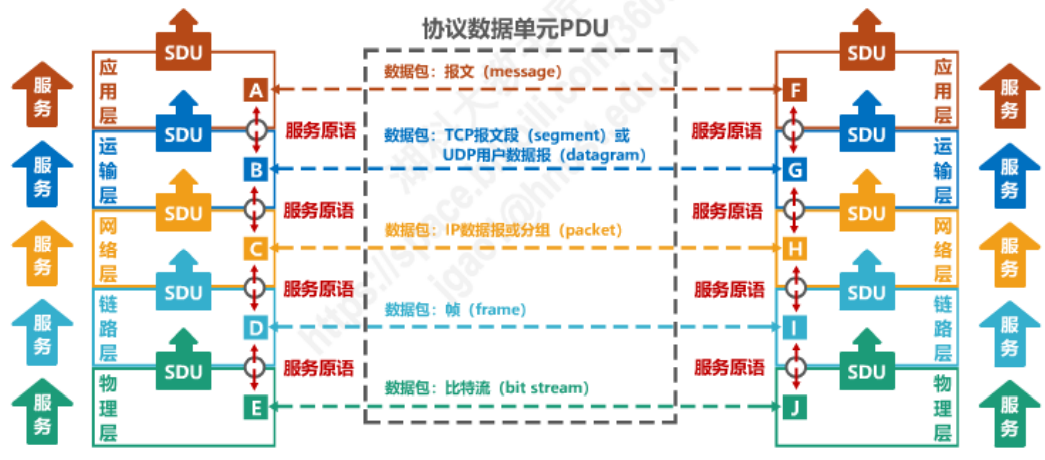
5. 1.7.5 Architecture of TCP/IP
The figure below shows an example of the TCP/IP architecture. The

specific protocols are divided into layers to represent the TCP/IP protocol family. Its characteristics are that the upper and lower ends are large and the middle is small. 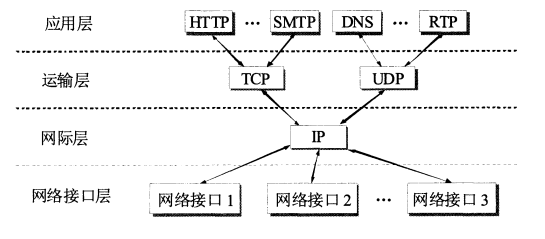
It shows that the TCP/IP protocol can provide services for various applications, and at the same time, the TCP/IP protocol also allows the IP protocol to run on the Internet composed of various networks.